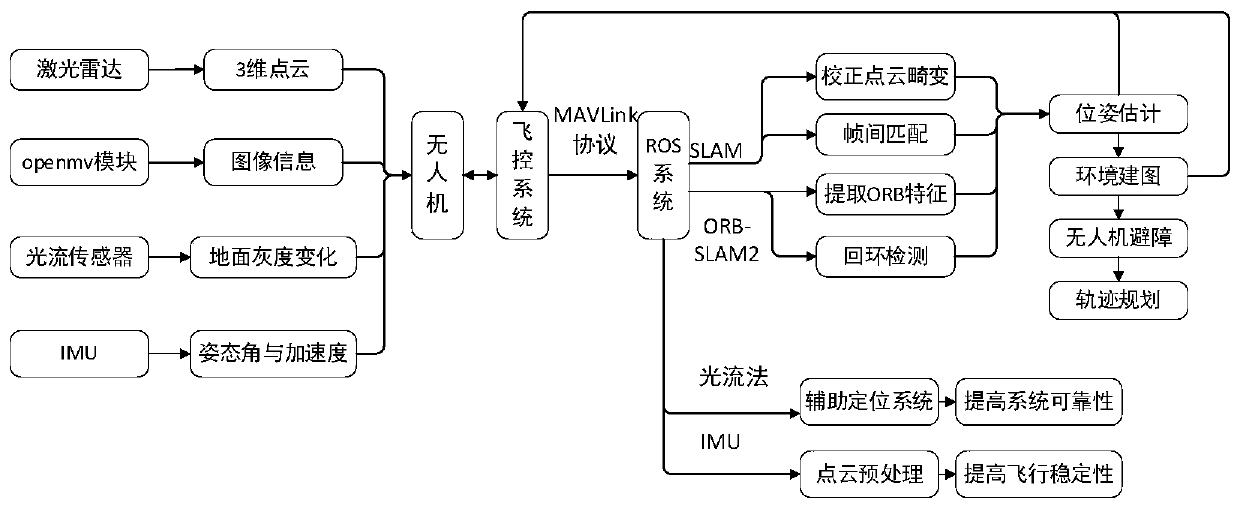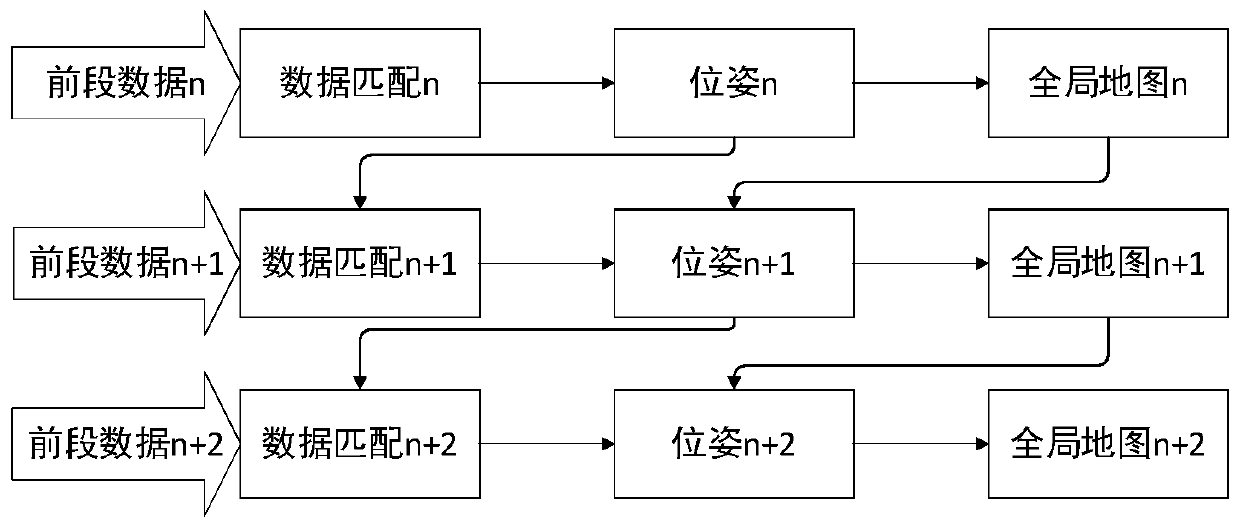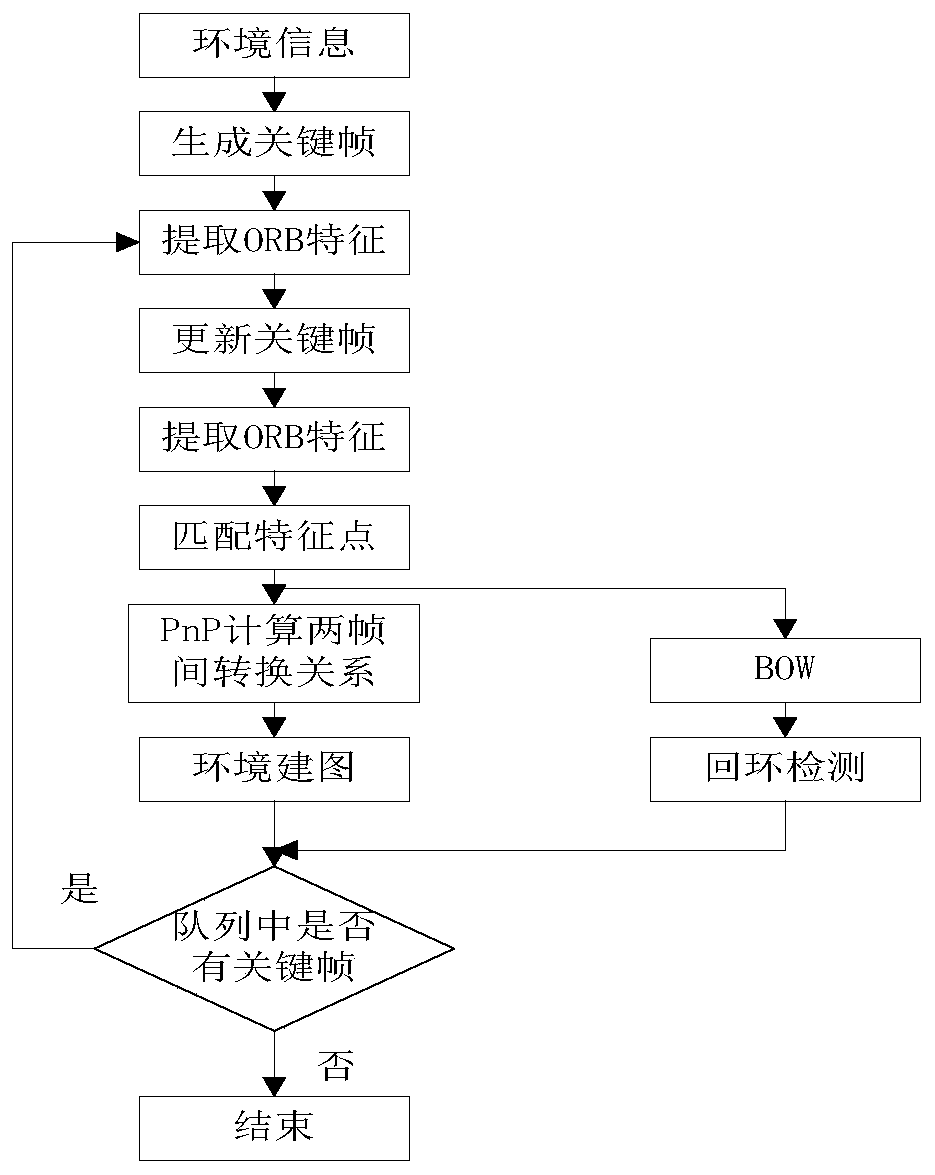Autonomous positioning method of outdoor unmanned aerial vehicle
An autonomous positioning and drone technology, applied in the field of unmanned aerial vehicles, can solve problems such as loss of control, positioning failure, and falling of drones
- Summary
- Abstract
- Description
- Claims
- Application Information
AI Technical Summary
Problems solved by technology
Method used
Image
Examples
Embodiment Construction
[0015] This embodiment is dedicated to providing a system for autonomous positioning of outdoor UAVs based on fusion of 2D lidar and depth cameras. The fusion of 2D lidar and depth cameras uses laser SLAM algorithms and ORB-SLAM algorithms to convert sensor The position information of the human-machine and the environmental map are analyzed and synthesized for the purpose of correcting point cloud distortion and optimizing the mapping information, so as to complete the decision-making and pose estimation required for the autonomous positioning of the UAV.
[0016] Through the multi-level data fusion and data optimization processing of the 2D lidar and depth camera point cloud, the precise pose information and dense map information of the drone are finally obtained. In this process, the SLAM algorithm is fully used for data processing. Calculate and obtain separated observation information, save and export useful information.
[0017] figure 1 The structural block diagram of t...
PUM
 Login to View More
Login to View More Abstract
Description
Claims
Application Information
 Login to View More
Login to View More - R&D Engineer
- R&D Manager
- IP Professional
- Industry Leading Data Capabilities
- Powerful AI technology
- Patent DNA Extraction
Browse by: Latest US Patents, China's latest patents, Technical Efficacy Thesaurus, Application Domain, Technology Topic, Popular Technical Reports.
© 2024 PatSnap. All rights reserved.Legal|Privacy policy|Modern Slavery Act Transparency Statement|Sitemap|About US| Contact US: help@patsnap.com










